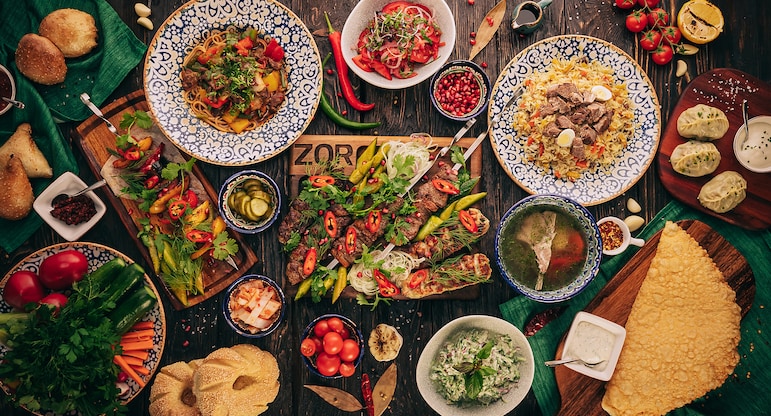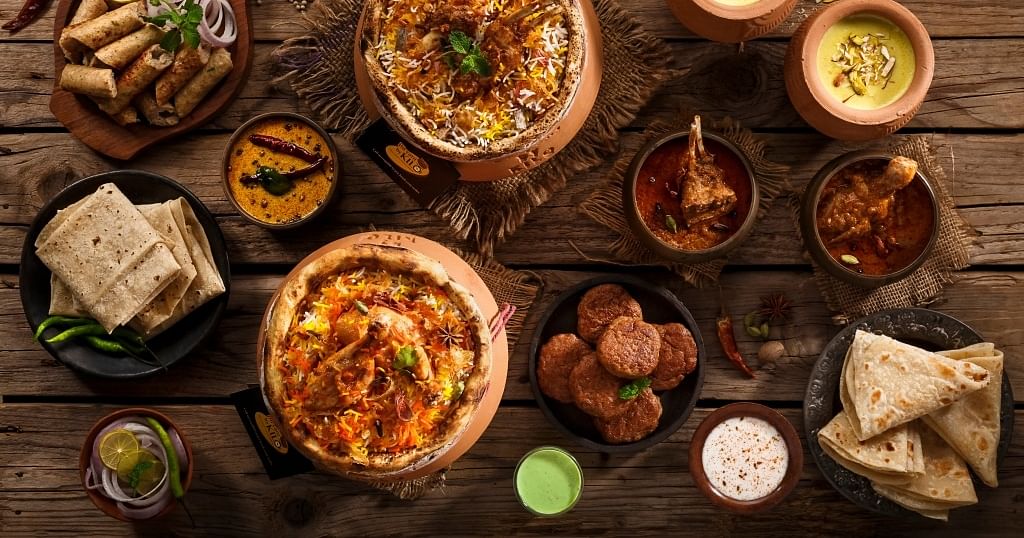
Food is any material consumed in order to provide nutrition to an organism. Food is generally of animal, plant or microbial origin, and typically contains various necessary nutrients, including proteins, carbohydrates, vitamins, or iron, and is consumed in order to supply energy to the body that it needs to survive. In most cases, food is also used as a fuel or to produce chemical compounds that add to the body’s stores of energy.
Food can be classified according to its types: animal, plant or microbial. Animal food can be classified according to what it consists of: milk, meat, eggs, fish and other marine animals; vegetables, fruits, nuts and legumes; whole grains that are processed; and alcoholic beverages, which include beer, ale, whiskey and lager. Plant food consists of all living organisms that contain carbohydrates, inorganic or organic compounds, sugars or other complex carbohydrates.
Plants contain many substances: that are vital for their existence. Some of the most important food groups are carbohydrates, proteins, vegetables, fruits and nuts. Plants contain carbohydrates by means of the food they contain, which may be in the form of sugars, starch or both, and can be grouped according to whether they are plant sources, like fruits and vegetables, or animal sources, like eggs, meat and dairy products.
Some plants even contain two or more substances altogether: vitamins, minerals and antioxidants. To eat well, one has to learn what kinds of food are good for them and what kinds of food are bad. To be healthy, all foods should provide energy and promote a healthy balanced diet. Some foods that are considered healthy are vegetables and fruits, because they are rich in vitamins and minerals, which are good for the body, and because they are easy to prepare (in the case of a salad, for example). Other healthy food groups are lean meats and fish and other seafood; grain products, because they contain carbohydrates and can be cooked into delicious dishes; nuts, which are another source of healthy fats; and legumes and whole-grains. Some people prefer to eat dairy products as a special treat when they are feeling particularly low, and have on a special diet, such as lactose-intolerant people. The variety of food choices available to you can make picking out a dish a breeze.
But although healthy food is good for the body: not everyone chooses to eat it. Some people are lactose intolerant, which means that when milk, or any kind of milk-based product is consumed, they get the disease called lactose intolerance. Lactose intolerance is basically a condition where the intestines are not able to take in enough lactose, a sugar found in milk, because of a problem with the villi in the small intestines. This results in excessive gas and stomach cramps. People who are lactose intolerant need to eat very carefully, because the symptoms are often not recognizable as the effects of lactose intolerance, because of its mild nature. They may present with bloating and diarrhea as simple symptoms.
People who choose to go through life: without having a proper diet of any kind would eventually become unhealthy. Because our diets are usually deficient in both vitamins and minerals, the lack of those elements can lead to an imbalanced body, where nutrients that the body needs are either not available or not produced enough. Over time this can lead to a variety of medical problems, including weak bones and muscles, fragile blood vessels, a lack of energy and concentration, and a higher risk of illness and disease.
Even though all the foods: we eat can be categorized as being both good and bad, there are certain groups of food that are much more likely to be nutritious than others. Those foods that fall into four different groups include vegetables, fruits, nuts, and meat. Vegetables, fruits, and nuts are considered to be the “good” fat, protein, and carbohydrates.
In addition, some plant foods are high in fiber, like whole-wheat and bran cereals, while others are high in fat and salt.

 Espresso Powders For Baking In 2022
Espresso Powders For Baking In 2022  How Big Is A Quarter Sheet Cake
How Big Is A Quarter Sheet Cake  How To Make Mini Brownie Bites?
How To Make Mini Brownie Bites?  How To Make Easy Brioche Bread?
How To Make Easy Brioche Bread?  1 Minute Oreo Mug Cake
1 Minute Oreo Mug Cake  Healthier White Sugar Substitutes You Can Use For Your Cooking And Baking Recipes
Healthier White Sugar Substitutes You Can Use For Your Cooking And Baking Recipes  Cupcake Size Chart : How Does It Works
Cupcake Size Chart : How Does It Works  1 Minute Chocolate Chip Mug Cookie (No Egg!)
1 Minute Chocolate Chip Mug Cookie (No Egg!)  The Ultimate Chocolate Mud Cake
The Ultimate Chocolate Mud Cake  Basic Vanilla Cup Cake Recipe
Basic Vanilla Cup Cake Recipe  Applesauce Substitute List You Need To Start Baking
Applesauce Substitute List You Need To Start Baking  Ridiculously Funny Baking Captions For Instagram
Ridiculously Funny Baking Captions For Instagram  How Are Kitchen Surfaces That Touch Food Made Hygienic?
How Are Kitchen Surfaces That Touch Food Made Hygienic?  The Good, the Bad and the Downright Ugly of Gordan Ramsay’s Food Venture
The Good, the Bad and the Downright Ugly of Gordan Ramsay’s Food Venture  The Future of the Corn and Soybean Storing And Marketing Service (CFS) Are Positive
The Future of the Corn and Soybean Storing And Marketing Service (CFS) Are Positive  The Most Controversial Dog Food in the I And You Dog Food
The Most Controversial Dog Food in the I And You Dog Food  What is Modified Food Starchy?
What is Modified Food Starchy?  Food And Drink 2 Words – Can You Really Get Luck From The Wheel Of Fortune?
Food And Drink 2 Words – Can You Really Get Luck From The Wheel Of Fortune?  How Do Earthworms Go About Creating Food?
How Do Earthworms Go About Creating Food?  Difference Between Food Web and Food Chain
Difference Between Food Web and Food Chain  Foods That Start With the Letter G – Which Is What Makes These Dishes So Good?
Foods That Start With the Letter G – Which Is What Makes These Dishes So Good?  Why Will My Dog Won’t Eat His Food But Will Eat Treats?
Why Will My Dog Won’t Eat His Food But Will Eat Treats?  Review of Shokugeki No Soma Episode 21 – “Shokugeki No Soma” Finale
Review of Shokugeki No Soma Episode 21 – “Shokugeki No Soma” Finale  What is the Best Way to Restrict the Development of Bacteria in Food?
What is the Best Way to Restrict the Development of Bacteria in Food?  My Time at Portia Dogs Food Review
My Time at Portia Dogs Food Review  Iams Large Breed Puppy Food – Feed Your Dog Healthy, Fun, and Nutritious Food
Iams Large Breed Puppy Food – Feed Your Dog Healthy, Fun, and Nutritious Food  Feed Your Senior Dog – Chicken And Brown Rice Nutritional Supplement
Feed Your Senior Dog – Chicken And Brown Rice Nutritional Supplement  Tie Dye With Food Coloring
Tie Dye With Food Coloring  Dragon And Phoenix Chinese Food – What Are They?
Dragon And Phoenix Chinese Food – What Are They? 


